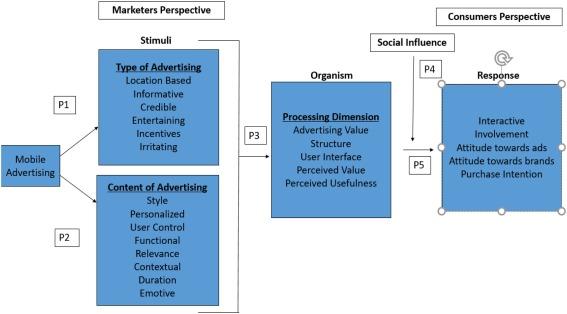Top Sustainable technologies Transforming Educational Settings: A Comprehensive Guide
as the world continues to embrace sustainability, educational institutions are rapidly evolving by adopting sustainable technologies that foster eco-friendly learning environments. From energy-efficient infrastructure to digital learning platforms, these innovations not only reduce environmental impact but also enhance the quality of education. In this comprehensive guide, we’ll explore the top sustainable technologies transforming educational settings, discuss their benefits, share inspiring case studies, and provide practical tips for implementation.
Table of Contents
- Why Sustainability Matters in Education
- Innovative Sustainable Technologies in Education
- Benefits of Sustainable educational Technologies
- Practical Tips for Implementation
- Case Studies: Real-World Examples
- Conclusion
Why Sustainability Matters in Education
Educational settings hold a unique responsibility in shaping tomorrow’s leaders. As climate change and environmental concerns become more pressing, educators are called to lead by example. Integrating sustainable technologies in schools, colleges, and universities demonstrates a commitment to environmental stewardship and offers students firsthand experience wiht eco-friendly practices. Sustainable education empowers learners, reduces operational costs, and helps create healthier learning environments.
Innovative Sustainable Technologies in Education
Let’s dive into the top sustainable technologies reshaping modern educational environments:
1. Solar panels and Renewable Energy Systems
- solar panels are being installed on rooftops of schools and universities to harness clean energy, cut utility costs, and reduce dependence on fossil fuels.
- Many institutions combine solar with energy storage systems, ensuring a reliable, low-carbon power supply.
- Renewable energy projects often become learning tools, providing students with hands-on experience in sustainability and engineering.
2. Green Building Design and Retrofitting
- Institutions are adopting LEED-certified building standards for new construction and renovations, focusing on energy efficiency, natural lighting, and improved indoor air quality.
- Features like green roofs, rainwater harvesting, and low-emission construction materials are becoming standard in modern educational architecture.
- smart building management systems automatically adjust lighting, heating, and cooling to optimize energy use.
3. Digital Learning Platforms and Paperless Classrooms
- Learning Management Systems (LMS) like Moodle, Google Classroom, and Canvas enable online assignments, digital textbooks, and virtual collaboration—drastically reducing paper usage.
- Teachers and students can access resources anytime, anywhere, promoting inclusivity and reducing commuting emissions.
- Digital grading and communication streamline administrative processes, supporting both sustainability and productivity.
4. Energy-efficient Devices and Smart Classroom Technology
- LED lighting, energy-efficient projectors, and ENERGY STAR-rated computers minimize electricity consumption in classrooms.
- IoT sensors monitor occupancy and adjust lighting/heating accordingly, preventing waste and enhancing comfort.
- Interactive whiteboards and digital displays replace traditional chalkboards, promoting collaborative and resource-conscious learning.
5. Sustainable Transportation Initiatives
- Electric buses and bicycles are reducing the carbon footprint associated with student and staff commuting.
- Schools encourage carpooling, walking, and public transit through incentive programs and improved campus design.
- Charging stations and secure bike shelters make sustainable transportation more attractive for the community.
6. Smart Water Management Solutions
- Water-efficient fixtures and smart irrigation systems decrease water wastage in restrooms and on school grounds.
- Greywater recycling systems are being implemented to reuse water for landscaping and maintenance.
- Real-time monitoring detects leaks early, preventing unnecessary resource loss and damage.
7.Waste Management and Recycling Technologies
- Automated recycling bins and composting programs streamline waste sorting and reduce landfill contributions.
- Educational campaigns, supported by technology like apps and digital signage, foster a culture of sustainability among students and staff.
Benefits of Sustainable Educational Technologies
Adopting green technologies in educational settings brings numerous advantages, including:
- Cost Savings: Reduced energy and resource consumption translates to lower utility bills.
- Environmental Impact: Cutting carbon emissions and waste paves the way for a greener future.
- Healthier Learning Environments: Enhanced air quality, better lighting, and ergonomic spaces promote student well-being.
- Future-Ready Students: Exposure to sustainable technologies prepares learners for green careers and responsible citizenship.
- Enhanced Reputation: Demonstrating a commitment to sustainability improves institutional credibility and attracts eco-conscious families and students.
Practical Tips for Implementation
Ready to make your educational setting more sustainable? Consider these practical steps:
-
Start with an Energy Audit:
Assess your building’s energy usage to identify areas for enhancement and prioritize upgrades.
-
Secure Funding and Support:
Look for grants, sponsorships, or government programs supporting green initiatives in education.
-
Engage Stakeholders:
Involve students, teachers, parents, and administrators in sustainability planning to build collective ownership.
-
begin with Pilot Programs:
Implement small-scale projects—such as a solar array or digital grading system—to test results and gather feedback.
-
Leverage Smart Technology:
Utilize IoT, cloud platforms, and data analytics for real-time monitoring and optimization.
-
educate and Inspire:
Align your curriculum with sustainability goals and celebrate green achievements within your community.
Case studies: Real-World Examples
Eden Park Primary School,United Kingdom
- One of the first primary schools in the UK to achieve Passivhaus standards.
- Features include super-insulated walls, energy-efficient windows, and on-site renewable energy generation.
- The result: over 70% lower energy consumption and an inspiring learning habitat for students to understand sustainability.
University of California, Davis
- UC Davis implemented a comprehensive zero-waste initiative, with advanced recycling technology, centralized composting, and digital campaigns for student participation.
- This led to a diversion rate of over 80%, inspiring institutions nationwide to adopt similar strategies.
First-Hand Experience: A Teacher’s Viewpoint
“Switching to a digital classroom drastically reduced our paper use and administrative workload. Students viewed assignments online, collaborated via apps, and submitted work digitally—making lessons more dynamic while supporting our school’s sustainability goals.”
– Maria Thompson, High School Teacher, New York
Conclusion
Sustainable technologies are transforming educational settings, making them smarter, healthier, and more responsible stewards of our planet’s resources. From energy-efficient infrastructure to digital innovations, these technologies not only benefit the environment but also enhance the educational experience for students and staff alike. By adopting a forward-thinking approach, educational institutions can lead the way in building a better, greener future.
Ready to embrace sustainability in your educational institution? Start with one initiative today and inspire your community for generations to come!

